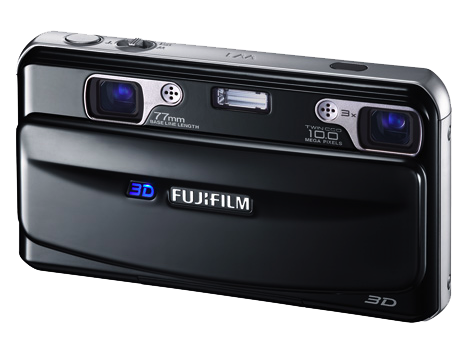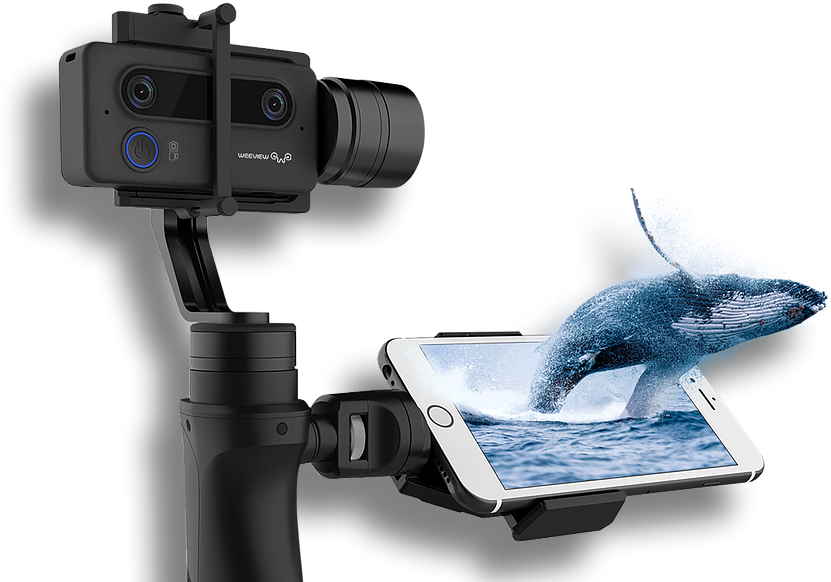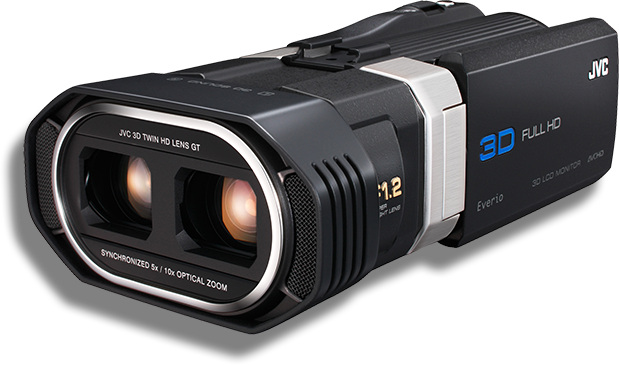STEREO 3D CAMERAS
Stereo photography has experienced various levels of interest since the mid 19th century.
Dual lensed cameras are quite unique in the history of photography.
Digital 3D Cameras
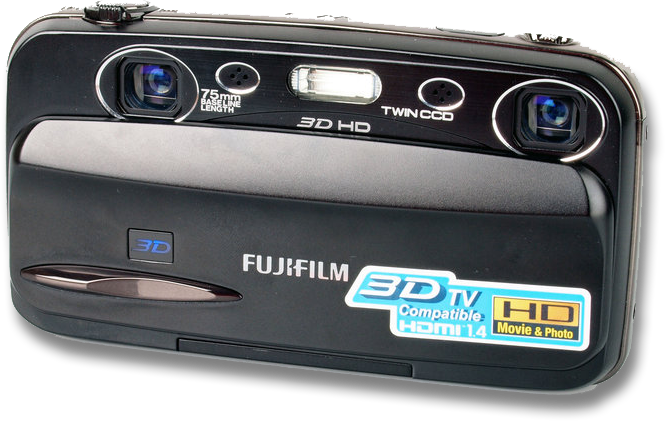
Most digital cameras capture both stills and video. 3D cameras came and went very quickly, though VR seems to have spurred some new options.
Film 3D Still Cameras
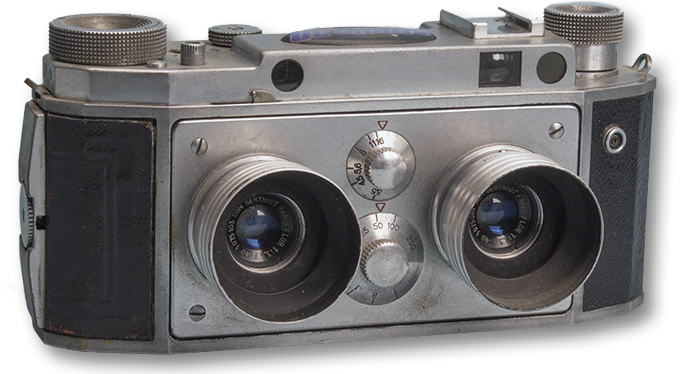
Stereo film cameras have a long history with peak popularity in the 1950's which paralled the 3D movie boom of the period.
Hybrid 3D Cameras
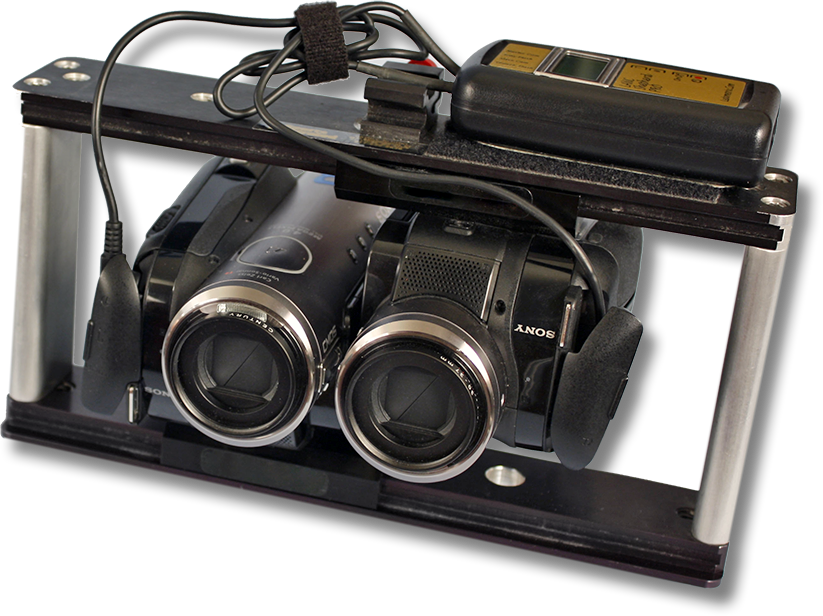
Dual camera rigs are tricky to syncronize, but offer more flexibility than fixed stereo cameras. Stereo attachments can also be used.
Digital 3D Cameras
Used by Studio 3D
Fujifilm Finepix W1 and W3
In 2009 Fuji introduced the world's first digital stereo camera, the Finepix W1. I was stunned when I saw the rear display actually featured an autostereoscopic image! (Incidentally, I'm in one of the demo shots!) The interaxial, at 77mm, is a bit wider than average eye spacing, with the W3 (released in 2010) at 75mm. Extra mode allowed for "cha-cha" style 3D.Camera also shoots 3D video. Cyclopital3D created an adapter that ingeniously allowed for external flash, carry strap and wide angle lenses. On camera flash is virtually useless (except as trigger for external flash).
Discontinued May 2013
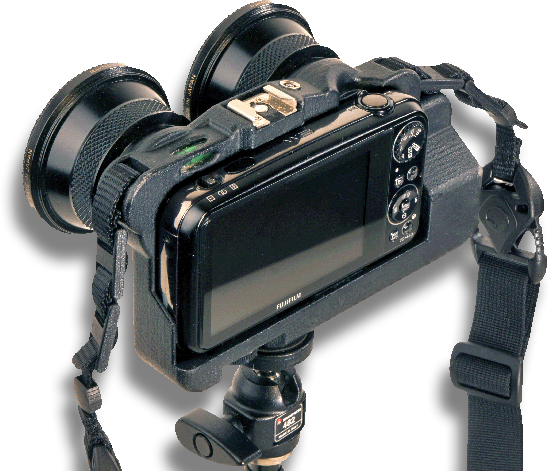
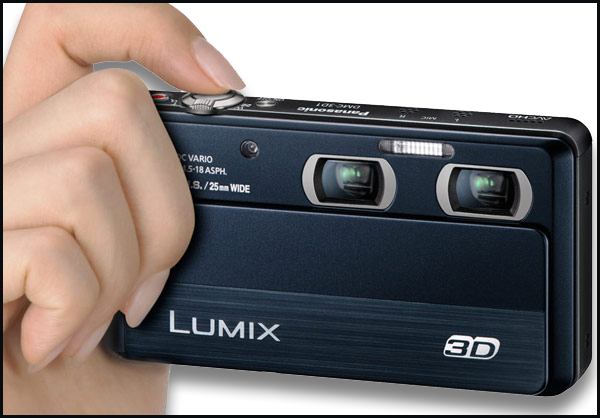
Panasonic Lumix DMC-3D1
The Lumix 3D1 came on the market in Dec 2011. I was initially skeptical at the small 30mm interaxial, but was surprised at how often that was the perfect lens spacing. The actual downside is lack of manual control (again, on camera flash is practically useless). However, the lowlight capability is pretty decent, especially if a tripod is available. Unfortunately, no 3D display. Mostly preferred over the Fuji, but very hard to find, especially with an English menu.
Discontinued 2013

Launched in 2017 via Kickstarter, we were backers and got our camera/stablizer setup in September (about $250). Your phone acts as a monitor, but the phone we used was not autostereoscopic (as illustrated). The stabilizer was not super intuitive- I found it going in directions I couldn't quite control... may take some practice. The wide stereo video (.mp4) has been fairly good. Vegas Pro does not recognize the 3D, but Magix does.
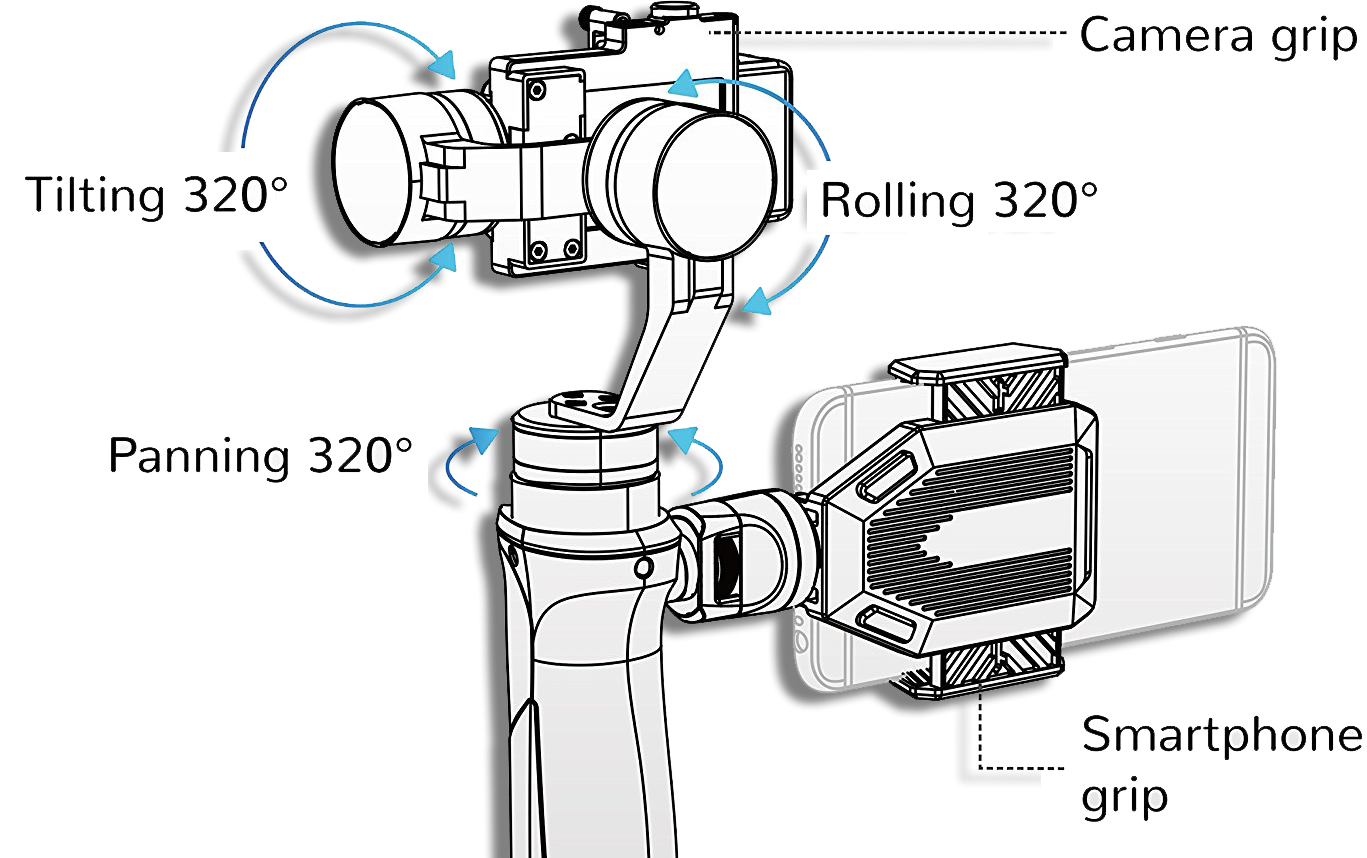
Possibly the best prosumer 3D video camera to be made during the short time (2011) when 3D was actually being supported by manufacturers. Full dual HD with an autostereoscopic display, it utilized the MVC .mp4 stereo format. Unfortunately, few video editors recognize the format (aside from MAGIX) so it comes with a splitter utility. Relatively narrow (42mm) lens with tight (34mm) interaxial. Cyclopital made attachments to widen the view as well as expand the interaxial.
Discontinued 2013
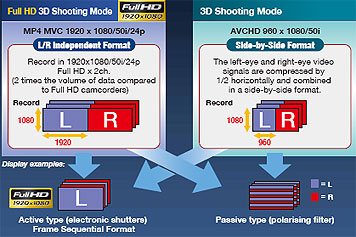
Toshiba SK-3D7 VHS-C

World's first Stereoscopic CCD Video camera 1989
The camera system was originally priced at US$3800, but we were able to snag one from REEL 3-D Enterprises around 1992 for $995. It was super lo-res (720x240 per eye) but amazing to be able to shoot 3D video... it looked pretty good at the time! Certainly pre-digital but closer than film.
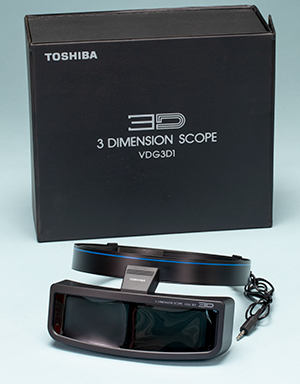
Film 3D Still Cameras
Previously used by Studio 3D
Stereo Realist
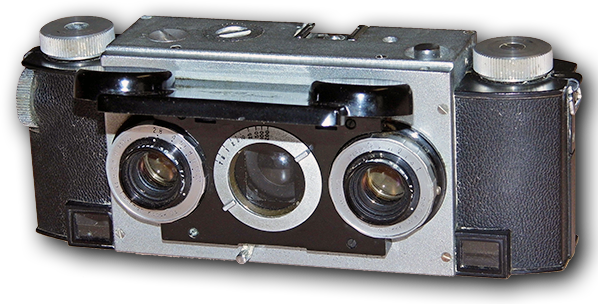
This is the camera that started the 3D revolution in 1947 and kickstarted me into the 3D world in 1980. The 35mm film format was 5-P (5 perforations wide) and all the American made stereo cameras of the time followed suit. A huge advertising campaign made the expensive camera (and viewer) successful.
Busch Verascope

Many stereo photographers, including myself, considered the wider (7-P, 7 perferations) format of this French stereo camera preferable to the portrait "Realist" American 5-P. Unfortunately, this camera was subject to flare (often called a "Flareascope") and lens hoods often helped. The other 7P camera was a German Belplasca.
View-Master Personal
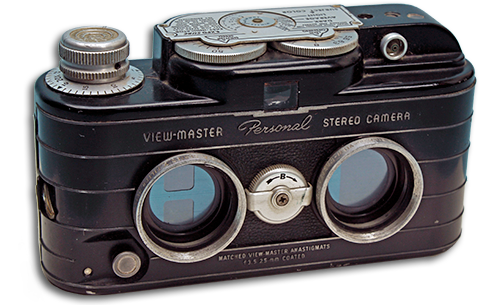
Brilliantly designed camera that shot pairs appx 10x12mm across the top of the film, then along the bottom as one rewound the film. The developed film would be run through a provided film cutter, and resulting film chips slid into blank reels so one could make their own custom View-Master reels.
RBT S1 Custom
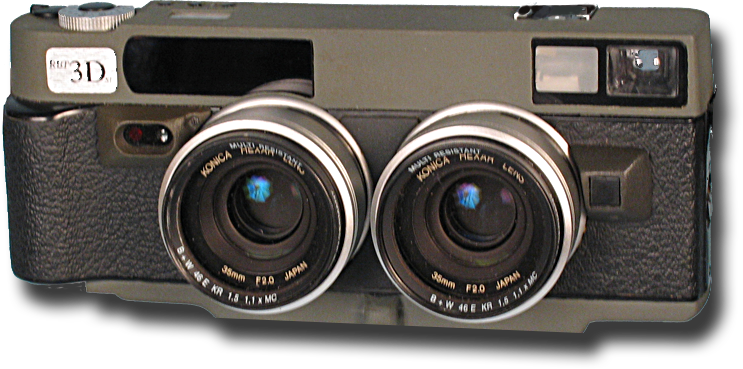
Possibly the best stereo film camera ever made, the German made RBT was a siamese pair from two Hexars and was considered a magic camera due to the tack sharp, perfectly exposed photos it would take. Both 45 and 59mm interaxial versions were available (both very much sought after).
Hybrid 3D Cameras
HDR-HC3 Video

Small Sony camcorders that could be very tightly syncronized with Rob Crockett's LANC Shepherd Pro, circa 2008. Sony and other camcorders used the LANC terminal until 2014. One camera upside-down allowed close (55mm) interaxial while uninverted was about 90mm.
Canon S-95
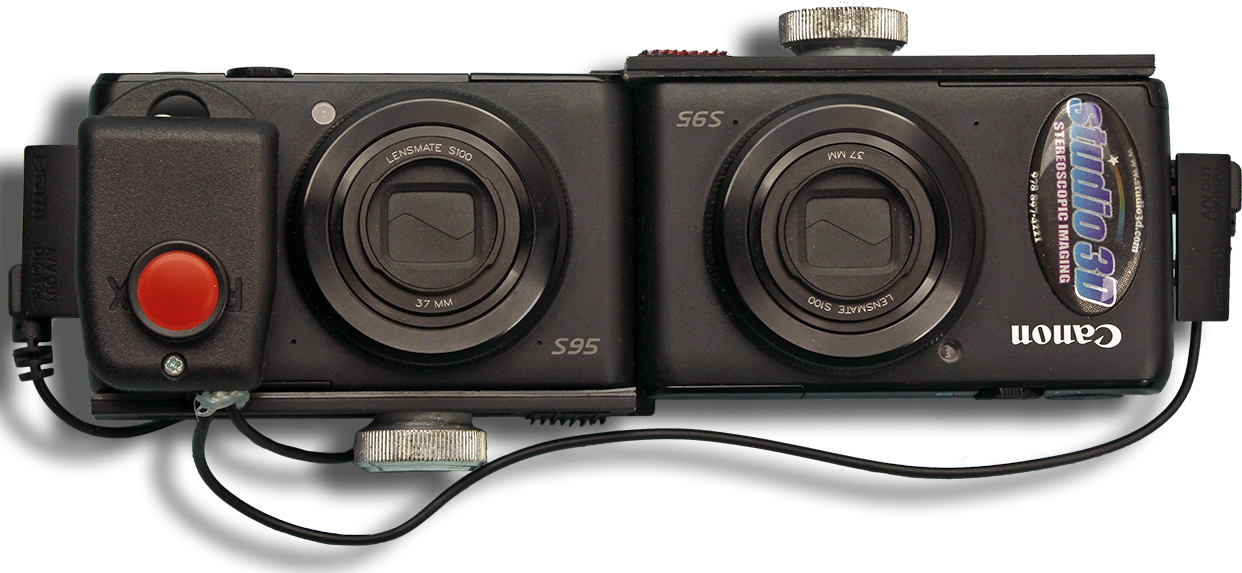
The Canon S-95 pair allows a minimal interaxial of 75mm. A single Y remote can be used to fire both in excellent sync. (Button and Z-mount available from Digi-Dat. Maximum lens separation is limited only by wire length. (No video sync.)
Samsung NX-1000
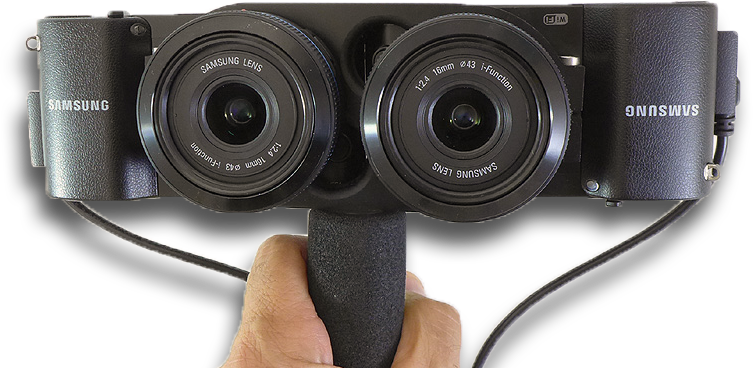
Currently the popular twin camera rig consists of two Samsung NX-1000 cameras. The interaxial can be as little as 68mm with the right mount (and filing the strap lugs!). DrT has written an extensive blog on this setup (we have not used this rig, but have been tempted!).
Lumix 3D Lens
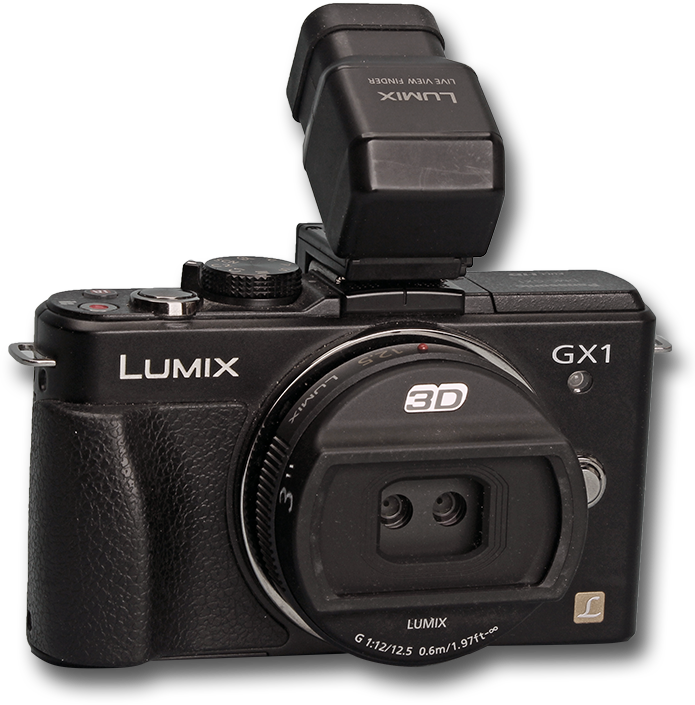
Very strange that Panasonic came up with a micro 4/3 add-on lens with only a 10mm interaxial, and factory fixed focus set at 25"... that's too far! Luckily the focus can be brought way down by inserting washers inside. The lens shown is for macro 3D with focus set to about 80mm.

